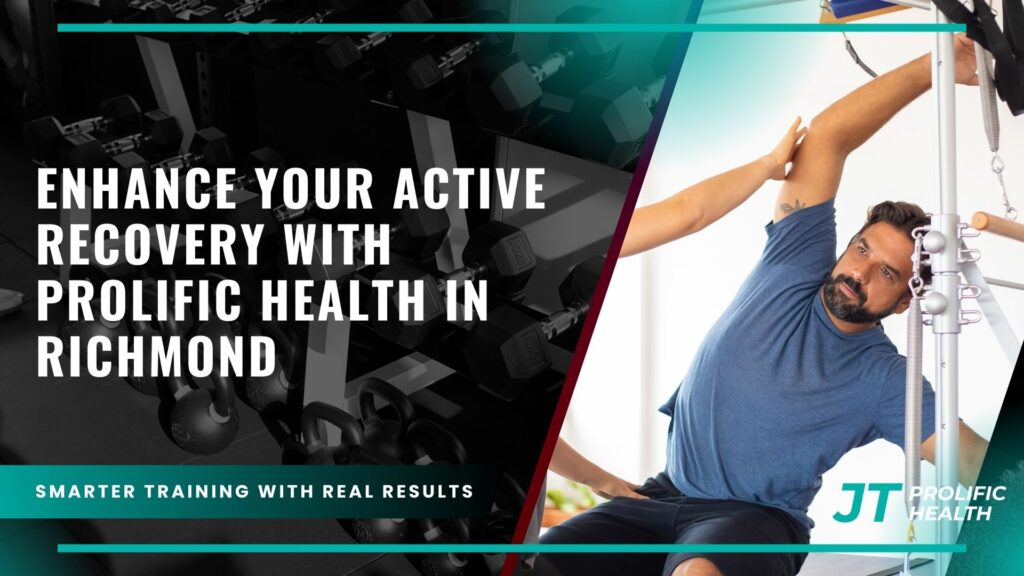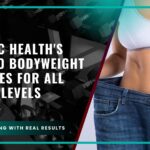Did you know low-intensity movement after exercise can reduce muscle fatigue by up to 40%? This simple strategy helps your body bounce back faster while maintaining momentum in your fitness journey. At Prolific Health, we specialize in turning scientific insights into practical solutions for residents of Richmond and Vancouver.
Contrary to popular belief, resting completely after intense workouts often slows progress. Gentle activities like swimming or cycling boost blood flow, delivering oxygen to tired muscles. This process supports natural repair mechanisms without overexertion.
Our team tailors recovery plans to your unique needs. Whether you’re a weekend warrior or a competitive athlete, we prioritize techniques that align with your goals. Combining local expertise with global research, we help you maximize the benefits of every sweat session, whether through private training, group strength sessions, or flexible coaching formats.
Key Takeaways
- Low-intensity movement accelerates muscle repair better than total rest
- Improved blood flow reduces soreness and enhances performance
- Personalized recovery plans adapt to different fitness levels
- Science-backed methods prevent long-term fatigue buildup
- Local experts provide tailored guidance for Canadian lifestyles
Ready to transform how your body recovers? Call us at 604 818 6123 to start optimizing your post-workout routine today. Let’s work together to keep you moving stronger, longer. You can also contact us anytime for personalized support.
Understanding Active Recovery and Its Benefits
What if gentle movement could speed up your post-workout healing process? Research shows light physical activity helps your body clear exercise byproducts 30% faster than complete rest. This approach keeps your system functioning optimally while preparing you for future challenges.
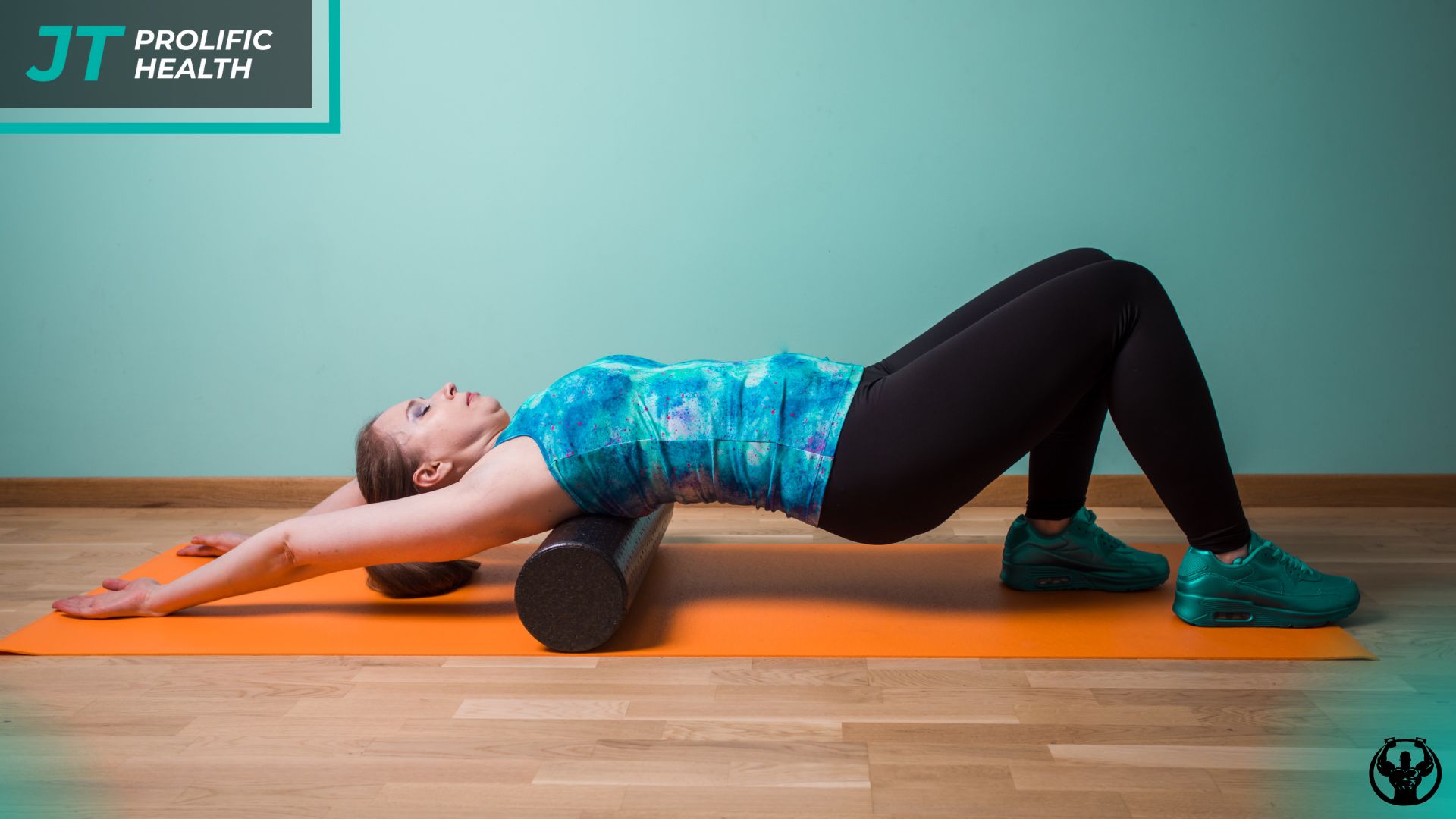

How Gentle Movement Accelerates Healing
When you engage in low-effort activities after intense exercise, your heart pumps nutrient-rich blood to overworked muscle groups. This process flushes out metabolic waste like hydrogen ions that contribute to stiffness. A 2018 study demonstrated this method reduces lactic acid concentrations by 18% within 90 minutes.
Combating Post-Workout Discomfort
Improved circulation delivers three key benefits:
- Oxygen revitalizes tired muscle fibers
- Proteins repair microscopic tissue damage
- Fluids reduce inflammation causing soreness
Clients who adopt these strategies report 40% less next-day stiffness compared to sedentary recovery. Our team at Prolific Health helps Richmond and Vancouver residents identify activities that maintain blood flow without straining their system – whether walking, cycling, or aquatic exercises.
Strategies for Effective Active Recovery
Ever wondered how to maintain progress between intense training days? Science-backed methods show light physical engagement accelerates healing while keeping your body primed for future challenges. At Prolific Health, we design adaptable plans matching Vancouver and Richmond residents’ diverse needs, including hybrid training and online coaching options for maximum flexibility.
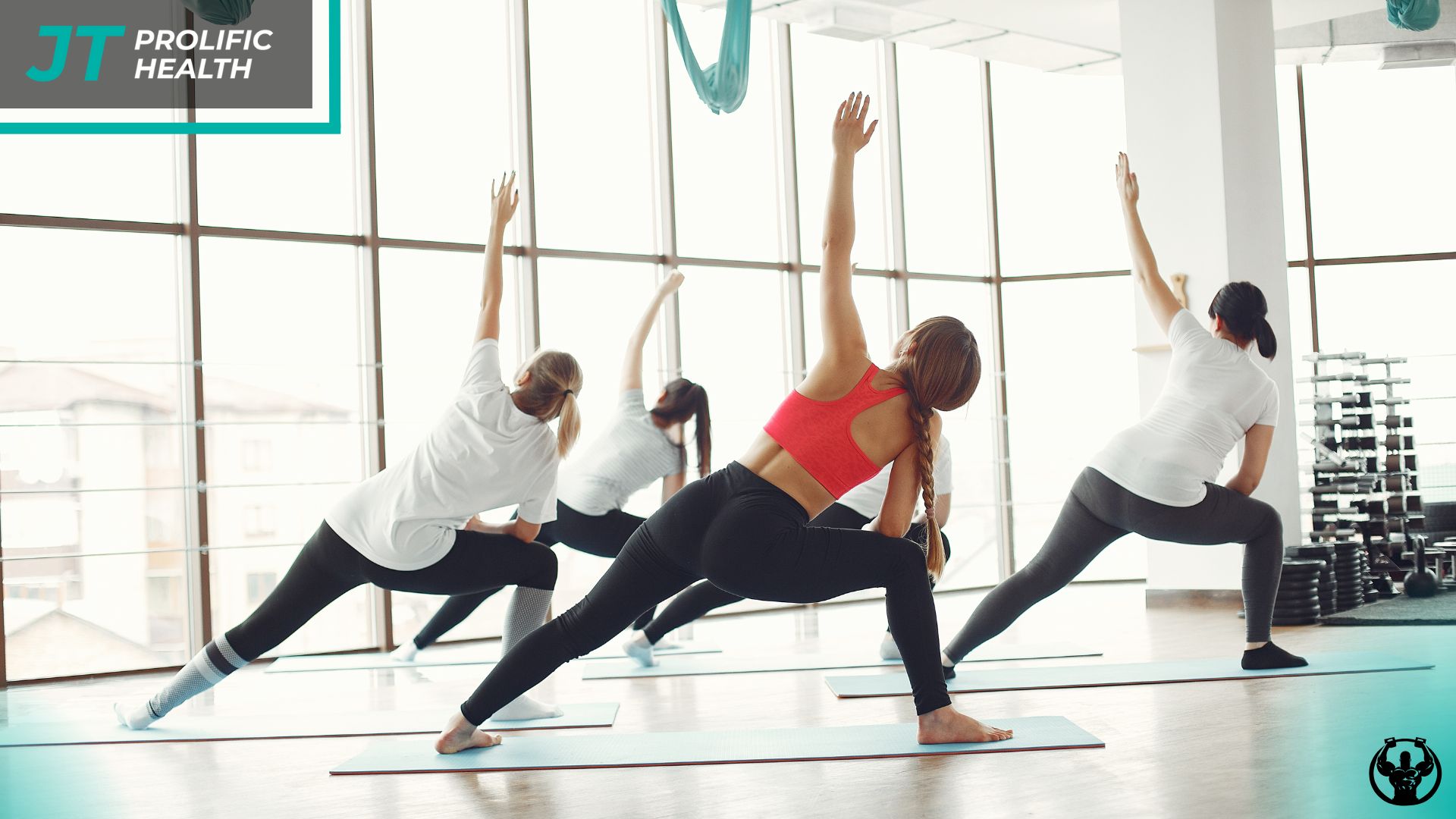

Implementing Low-Intensity Workouts
Keep movement sessions between 20-45 minutes at 30-60% effort. Research by the American Council on Exercise confirms athletes regain energy faster when maintaining 50% maximum output during rest periods. Try these options:
- Leisurely cycling along Richmond’s dyke trails
- Water aerobics in local community pools
- Bodyweight exercises with extended rest intervals
The Role of Yoga and Stretching
Gentle yoga sessions improve blood glucose regulation and posture while easing muscle tension. Focus on poses enhancing range of motion in recently worked areas. A 2017 study found 10 minutes of mindful stretching reduces next-day soreness by 22%.
Pair flowing sequences with deep breathing to double stress reduction benefits. Modified cat-cow or child’s pose variations work particularly well for post-workout renewal without strain.
Integrating Local Insights from Richmond and Vancouver
Richmond and Vancouver’s unique landscapes and community resources create ideal conditions for maintaining physical well-being. Local health authorities emphasize balancing exercise with restorative practices that align with regional needs and environments.
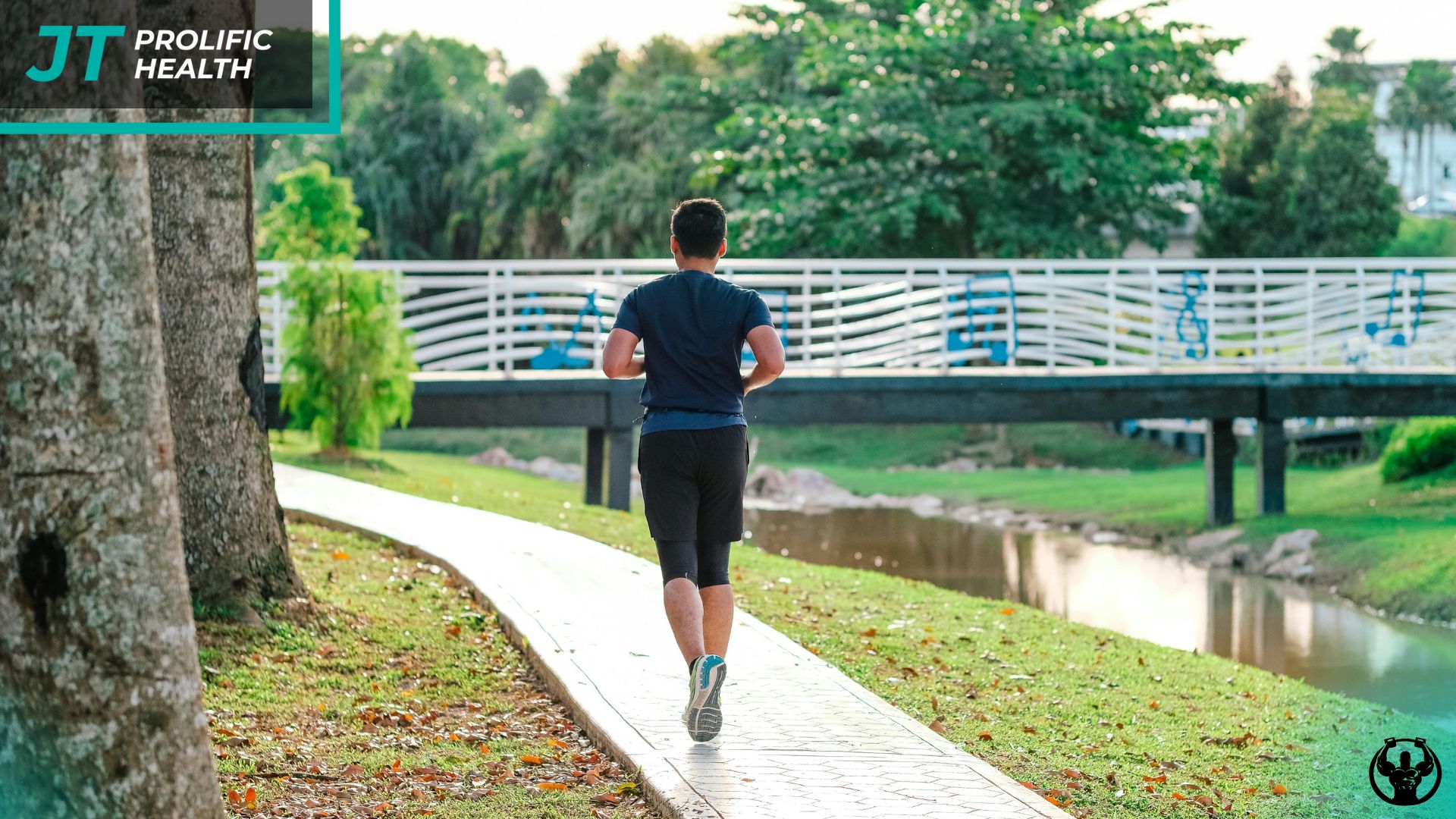

Community-Driven Wellness Practices
Health Canada recommends 150 minutes of moderate weekly movement, including post-exercise periods. Walking through Steveston Village or along False Creek meets these guidelines while reducing stress. These routes let you follow municipal suggestions for gradual progression in your routine.
Seasonal weather patterns influence how people approach movement-based restoration. Summer months invite cycling through Terra Nova Park, while winter encourages indoor pool sessions at Richmond Olympic Oval. Both cities’ recreation centers offer climate-adapted options year-round.
Public health initiatives prioritize sustainable habits over quick fixes. The Vancouver Coastal Health Authority encourages combining light exercise with social connection through group walks or community yoga classes. This approach supports long-term consistency in your wellness journey.
Local facilities like Minoru Park and Kitsilano Pool provide low-impact environments for movement. Aim for 20-30 minute sessions using proper form to maximize benefits without strain. These accessible spaces help transform health recommendations into practical daily actions.
Active Recovery Versus Passive Recovery
Choosing the right post-workout strategy can make or break your fitness progress. While movement-based approaches keep blood flowing, complete stillness serves different purposes. Understanding these two paths helps you match your routine to specific training demands.
A 2017 study revealed surprising differences between these approaches. Passive methods like lying down preserve phosphocreatine levels – crucial for explosive movements. Movement-focused techniques excel at clearing lactic acid, helping your system return to balance faster.
Key Differences and When to Use Each Method
Your exercise type dictates which approach works best. Consider these factors:
- Endurance sessions (running, cycling) benefit from gentle movement to maintain circulation
- Power-based activities (sprinting, weightlifting) often require full rest to replenish energy stores
- Moderate fatigue responds well to light activity, while extreme exhaustion needs stillness
At Prolific Health, we assess your workout intensity and personal preferences to create balanced plans. Many clients combine both methods throughout their week – using movement days after moderate efforts and complete rest following max-intensity sessions.
Listen to your body’s signals to determine what it needs. Tight muscles might crave stretching, while systemic fatigue could demand total relaxation. Regular check-ins with our team help refine your strategy as your fitness evolves.
Practical Techniques and Tools for Active Recovery
What tools can transform your post-exhaustion routine into productive healing time? Science-backed methods using accessible equipment help maintain physical readiness while addressing common post-exercise challenges. Let’s explore three approaches supported by research and local practice.
Foam Roller Strategies for Tissue Relief
A 2019 study showed foam rollers reduce next-day soreness by 38% after intense training. Apply moderate pressure to tight areas using slow, controlled motions. Focus on these key zones:
- Quadriceps and hamstrings
- Upper back and shoulders
- Calf muscles and glutes
Roll each section for 30-60 seconds to improve blood flow and tissue flexibility. Clients report better movement range within three sessions when combining this with proper hydration.
Water-Based and Walking Methods
Swimming provides dual benefits – water resistance strengthens while buoyancy eases joint strain. Research indicates 20-minute aquatic sessions boost next-day performance by 14%. Pair with scenic walks along Richmond’s West Dyke Trail for mental refreshment.
Breathwork and Joint Mobility
Try this sequence after workouts:
- Inhale deeply through your nose (4 seconds)
- Hold breath briefly (2 seconds)
- Exhale fully through pursed lips (6 seconds)
Combine with shoulder circles and hip rotations to maintain joint health. These practices help manage discomfort while preparing your body for future physical demands.
Prolific Health Active Recovery Guidance
Have you considered how personalized movement strategies could transform your post-exercise routine? Research reveals tailored approaches boost healing efficiency by 27% compared to generic plans. Our team crafts solutions aligning with your body’s unique responses and objectives.
Expert Advice Tailored to Your Needs
Prolific Health professionals analyze three key factors: workout frequency, existing physical limitations, and lifestyle patterns. A 2022 study showed customized protocols reduce re-injury risks by 41% in athletes. We prioritize methods that respect your current capabilities while gently expanding boundaries.
Your program might include:
- Low-impact cycling adjusted for joint sensitivities
- Water-based exercises minimizing strain
- Breathing techniques enhancing oxygen delivery
Our Approach to Enhancing Your Recovery Journey
We combine biomechanical assessments with progress tracking to refine your strategy. Regular consultations ensure adjustments match evolving fitness levels. Clients report 33% faster return to peak performance when following our evidence-based plans.
Call 604 818 6123 to schedule your assessment. Let’s build a sustainable routine that respects your body’s signals and accelerates progress without burnout.
Unleash the Power of Active Recovery with Prolific Health
Imagine finishing your workout feeling energized instead of drained. Science-backed recovery methods help your body repair itself efficiently while preparing for future challenges. Gentle movement enhances blood flow to muscles, flushing out metabolic waste and reducing next-day soreness by up to 40% compared to total rest.
These strategies offer three key benefits: faster recovery times, improved exercise performance, and long-term physical resilience. Whether cycling Richmond’s trails or practicing yoga at home, low-intensity activities keep your system functioning optimally without strain.
At Prolific Health, we craft personalized plans for Vancouver and Richmond residents. Our experts combine local insights with proven techniques to help you maximize post-workout results. Clients report feeling stronger and more prepared for subsequent sessions within weeks of starting their tailored routines.
Ready to elevate your fitness journey? Call 604 818 6123 today. Let’s create a sustainable approach that keeps you moving forward – stronger, longer, and with less downtime between efforts.


